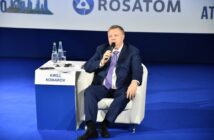By Israel Sekoko
LAST year, South Africa received 74th of 108 ranking in the annual World Energy Trilemma Index and did not make a top-5 list in the African region as a whole.
All countries on the continent have significant discrepancies concerning its demographics, access to natural resources, economic development, and energy consumption, placing them in the bottom half of the overall Trilemma rankings.
But the underperformance of the recent African powerhouse is a blaring confirmation of a dire need for a clear and diverse long-term energy policy in place.
Preferably with long-term reliable and affordable electricity source – like Koeberg nuclear power station, which has been operating in Western Cape for the past 36 years and will still provide electricity for the next 23.
The World Energy Trilemma Index itself is an independent and objective rating of a country’s energy policy and performance using verified global and country-specific data to assess the management of three core dimensions: energy security, energy equity, and environmental sustainability.
In short, it can show which policies are working and which are not and which performance over the last decade can be a blueprint towards brighter days when the national energy systems grow in three dimensions.
• Energy equity assesses a country’s ability to provide universal access to affordable, reasonably priced, and abundant energy for domestic and commercial use.
• Energy security dimension reflects a nation’s capacity to meet current and future energy demand reliably, withstand and bounce back swiftly from system shocks with minimal disruption to supplies.
• Environmental sustainability dimension represents the transition of a country’s energy system towards mitigating and avoiding potential environmental harm and climate change impacts.
Since 2010, this Index has been accumulating data from the past decade and steadily assessing various national energy policies’ efficacy.
The top 10 performers all have several features in common.
Two of these features are of particular importance for South Africa: all top performers are Organisation for Economic Co-operation and Development OECD countries benefitting from longstanding active energy policies and the majority of them have nuclear in the energy mix.
For example, Switzerland has over 30% nuclear, Sweden roughly 40% nuclear, Finland – 18%, and France – over 70% nuclear.
Out of all electricity sources, nuclear is one of very few that can answer the trilemma.
Why are these facts highlighted?
The answer is simple – to prosper, a country needs a multi-dimensional energy policy that addresses the needs of now – energy security, the needs for the next decade – energy equity, and the needs of generations to come – environmental sustainability.
This trilemma posits that individual countries must balance energy affordability and access, security, and environmental sustainability to thrive and prosper with their respective energy mixes. Nuclear is part of this solution.
A modern nuclear power plant (NPP) can supply uninterrupted and available 24/7 power for 60-80 years at a predictable and affordable price, which is not drastically affected by the global commodity market’s volatility.
US Energy Department estimates show that nuclear power plants produce maximum power more than 93% of the time, making atomic energy the highest capacity factor energy source.
The true benefit comes from the added value that nuclear brings.
A study of the European nuclear industry by Deloitte suggested that nuclear provides more jobs per TWh of electricity generated than any other clean energy source.
According to the report, the nuclear sector sustains more than 1.1 million jobs in the European Union.
Each gigawatt of installed nuclear capacity generates €9.3 billion in annual investments in nuclear and related economic sectors and provides permanent and local employment to nearly 10,000 people.
For every €1 invested, the nuclear industry generates an indirect contribution of €4 in GDP, and every direct job creates 3.2 jobs in the EU as a whole.
Nuclear energy is also a vital component of a clean and sustainable energy strategy, which emits no CO2 into the atmosphere.
A recent study published by Nature Energy Magazine showed that each kilowatt-hour of electricity generated over a nuclear plant’s lifetime has an emissions footprint of 4 grams of CO2 equivalent (gCO2e/kWh).
The wind also generates 4gCO2e/kWh, solar – 6, gas – 78, hydro – 97g, and, in contrast, coal – 109.
In short, nuclear enables the economies’ growth, thus providing much-needed social equity and security thanks to the uninterrupted long-term source of electricity, all the while producing less CO2 during its lifetime than most of the other energy sources.
Many top performers of the World Energy Trilemma Index have chosen this energy source, and all these economies have been doing quite well.
We have chosen it already – let’s keep it in the mix.
______________
WEC Energy Trilemma index Tool. [Electronic resource]. URL: trilemma.worldenergy.org
Nuclear can help Africa jumpstart its 4th Industrial Revolution. Rosatom Newsletter. [Electronic Resource]. URL: https://rosatomnewsletter.com/centralafrica/nuclear-can-help-africa-jumpstart-its-4th-industrial-revolution/US Department of Energy. Nuclear power is the most reliable energy source and it’s not even close. 24/03/2021. [Electronic Resource]. URL: https://www.energy.gov/ne/articles/nuclear-power-most-reliable-energy-source-and-its-not-even-close
Foratom. Investing in low-carbon nuclear generates jobs and economic growth in Europe. Press-release. [Electronic resource]. URL: https://www.foratom.org/press-release/investing-in-low-carbon-nuclear-generates-jobs-and-economic-growth-in-europe/
Carbon Brief. Solar, wind and nuclear have ‘amazingly low’ carbon footprints. 8/12/2021. [Electronic resource]. URL: https://www.carbonbrief.org/solar-wind-nuclear-amazingly-low-carbon-footprints



